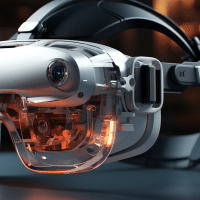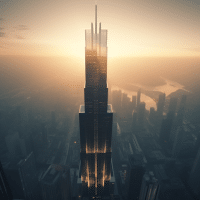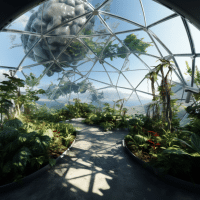
The design process has undergone a revolutionary transformation with the introduction of virtual reality (VR) in architecture and design. This groundbreaking technology has empowered architects and designers to go beyond traditional visualization methods and immerse themselves in their projects like never before. By leveraging VR, they can now explore and experience their designs in stunning 3D environments, enabling a deeper understanding of spatial relationships and proportions.
With the ability to create immersive, interactive environments in real-time, architects and designers can make informed decisions by quickly and easily iterating on their designs. They can walk through virtual spaces, adjusting elements and materials, and even simulate lighting and acoustics to achieve the desired ambiance. This level of flexibility and realism has unlocked a world of possibilities, enabling designers to craft breathtaking and lifelike spaces that can be experienced in a virtual world.
VR in architecture and design has transcended the boundaries of imagination, allowing professionals to push the limits of creativity and innovation. It has become an indispensable tool that not only enhances the design process but also elevates the way we perceive and interact with architectural spaces. As VR continues to evolve, it holds the promise of even more transformative possibilities, shaping the future of architectural and design exploration.
The Beginnings of VR in Architecture and Design
The use of virtual reality (VR) technology in architecture and design is revolutionizing the way we visualize and interact with spaces. By leveraging VR, architects and designers are able to create highly immersive and realistic 3D models of their projects, providing a new perspective and level of exploration during the design process. This newfound level of immersion empowers architects and designers to make more informed decisions and better understand the spatial potential of their designs.
Moreover, VR allows architects and designers to create spaces that are not only aesthetically pleasing but also highly functional. By experiencing their designs in a virtual environment, architects and designers can identify potential issues and optimize the layout, flow, and functionality of a space. This level of detail and accuracy in the design process helps ensure that the final product meets the clients’ expectations and requirements.
In addition to its design benefits, VR technology also offers practical advantages. It helps reduce both time and costs associated with traditional design processes. Architects and designers can iterate and refine their designs in a virtual space, minimizing the need for physical prototypes and costly revisions. This efficiency allows them to channel their efforts into creating the best possible design solutions for their clients, ultimately resulting in greater client satisfaction.
In summary, the integration of VR technology in architecture and design has transformed the industry by enabling architects and designers to create immersive, detailed, and functional designs. With the ability to explore spaces in a virtual environment, architects and designers can push the boundaries of creativity and deliver exceptional design solutions that truly meet the needs and desires of their clients.
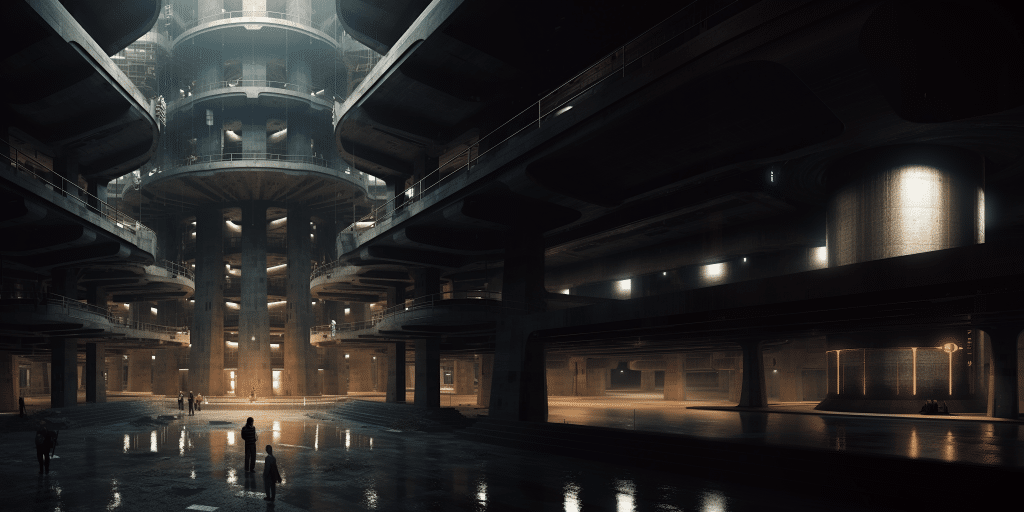
Benefits of Using VR in Architecture and Design
The use of virtual reality (VR) in architecture and design is revolutionizing the way we visualize and experience spaces. With VR, architects and designers can create immersive 3D environments that allow users to not only explore but also interact with a space in a way that was never before possible.
By leveraging VR technology, architects and designers can now provide a more realistic and accurate representation of a space, enabling them to better understand its scale, layout, and overall design before any physical construction takes place. This level of insight and foresight can significantly reduce costs and time associated with the design process, as potential issues and challenges can be identified and addressed early on.
Moreover, VR allows architects and designers to create a more engaging and interactive experience for clients. Clients can now immerse themselves in a virtual representation of their future space, gaining a deeper understanding of its aesthetics, functionality, and overall ambiance. This immersive experience empowers clients to make more informed decisions and provide valuable feedback, ultimately leading to a more satisfying end result.
In addition to its benefits in the design and decision-making process, VR also has the potential to transform how spaces are marketed and showcased. Virtual tours and walkthroughs can be created to give potential buyers or tenants a realistic and captivating preview of a property, even if it is still under construction. This not only enhances the marketing efforts but also helps to attract and engage a wider audience.
In conclusion, the integration of VR in architecture and design opens up a new realm of possibilities. It enables architects and designers to push the boundaries of creativity, while providing clients with an enhanced and immersive experience. With its ability to facilitate better design understanding, cost and time savings, and improved marketing, VR is undoubtedly reshaping the future of architecture and design.
Examples of VR in Architecture and Design
The use of virtual reality (VR) in architecture and design has truly revolutionized the way we visualize and interact with spaces. By harnessing the power of 3D visualization, architects and designers are able to create immersive experiences that transcend traditional limitations. Through VR, they can now explore and interact with their designs in ways that were previously unimaginable.
VR in architecture and design has brought forth a more efficient and streamlined design process. With the ability to quickly iterate and fine-tune their creations, architects and designers can achieve more accurate and refined results in a fraction of the time. The detailed 3D models created with VR technology allow them to examine every nook and cranny of their projects, gaining insights from various angles and perspectives. This level of exploration empowers them to make more informed decisions and craft designs that are both functional and visually stunning.
Best VR Games of This Year – Explore Around!
Beyond Gaming: the Evolution of VR
Moreover, the impact of VR extends beyond individual architects and designers. It has fostered a culture of collaboration and enhanced communication within the industry, revolutionizing the way projects are conceptualized and executed. By immersing clients, stakeholders, and fellow professionals in virtual environments, architects and designers can effectively convey their ideas and designs, allowing for a more comprehensive and realistic representation of the proposed spaces.
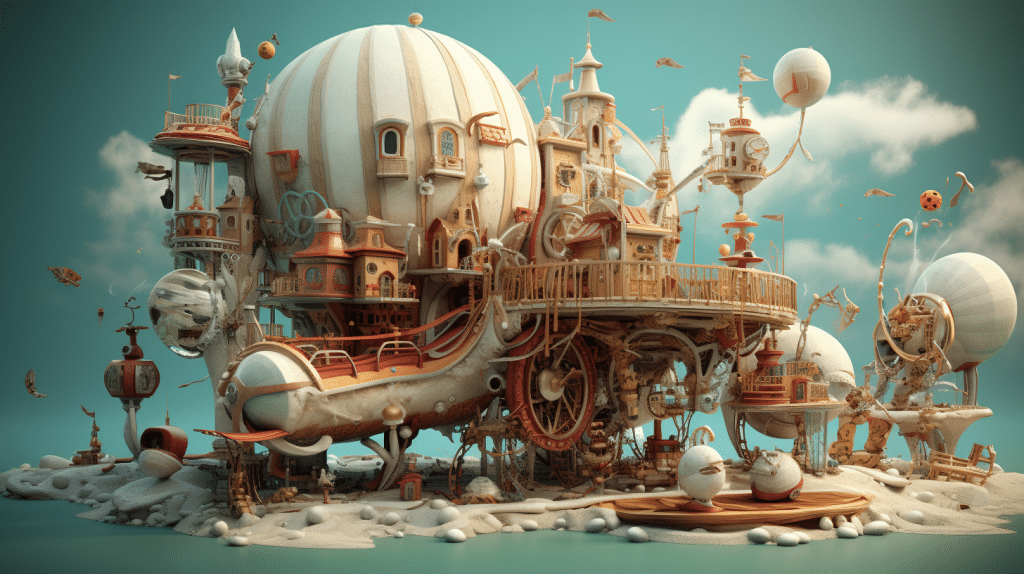
This interactive and immersive approach not only facilitates a deeper understanding and appreciation of the architectural vision but also encourages more fruitful discussions and more effective collaboration among all parties involved. In addition, VR technology enables architects and designers to experiment with different design iterations in a virtual space, saving time and resources typically required for physical prototyping. By exploring various design possibilities in a virtual environment, professionals can refine their concepts and make informed decisions before the physical construction phase, resulting in more efficient and successful projects. The utilization of VR in the architectural and design industry has truly transformed the way professionals work and has opened up new avenues for creativity, innovation, and collaboration.
In conclusion, VR has unleashed a new era of possibilities in architecture and design. It has transformed the way we conceive, create, and communicate spatial concepts, enabling us to push the boundaries of innovation and creativity. As this technology continues to evolve, we can only anticipate even more extraordinary advancements on the horizon.
Exploring Spaces in 3D with VR
Virtual Reality (VR) technology has revolutionized the way architects and designers explore and visualize spaces in 3D. By immersing users in a virtual environment, VR allows for a more interactive and immersive experience than traditional 3D visualization techniques. With VR, architects and designers can explore a space from any angle, allowing them to gain a better understanding of the space and its potential. They can walk through hallways, open doors, and interact with objects, creating a more realistic and tactile experience.
This level of immersion and interactivity provided by VR technology enables architects and designers to identify potential problems and make changes to the design before it is built. For example, they can test different materials, lighting conditions, and furniture arrangements to optimize the functionality and aesthetics of a space. By simulating real-world scenarios, VR allows architects and designers to anticipate how people will move and interact within a space, leading to more efficient designs.
Furthermore, VR technology opens up new possibilities for collaboration and communication in the architectural and design fields. Architects can easily share their virtual models with clients and stakeholders, allowing them to experience and provide feedback on the design before construction begins. This streamlines the decision-making process and ensures that everyone involved is on the same page.
In summary, VR in architecture and design is a powerful tool that goes beyond traditional visualization techniques. It provides architects and designers with a more realistic and immersive experience, enabling them to create better spaces and more efficient designs. With the ability to explore spaces in 3D and simulate real-world scenarios, VR is shaping the future of architectural and design practices.
Tips for Utilizing VR in Architecture and Design
Virtual Reality (VR) is revolutionizing the way architects and designers visualize and experience spaces. By utilizing VR in architecture and design, professionals can create immersive 3D experiences that allow them to explore and interact with their designs in a way that was previously impossible.
With VR, architects and designers can create highly detailed 3D models of their projects and explore them from any angle, enabling them to gain a better understanding of the space and make more informed decisions. They can virtually walk through the interiors, examine every corner, and even test different lighting conditions to ensure optimal design outcomes. VR technology also enables professionals to simulate real-world scenarios, such as how natural light may interact with the space throughout the day or how different materials may affect acoustics.
Not only does VR enhance the design process, but it also improves client collaboration and communication. By utilizing VR, architects and designers can create interactive experiences that allow clients to immerse themselves in the design and actively participate in the decision-making process. Clients can virtually explore different design options, visualize the scale and proportions of the space, and provide valuable feedback before the construction phase begins. This level of engagement fosters a deeper understanding and appreciation for the design, resulting in more successful projects.
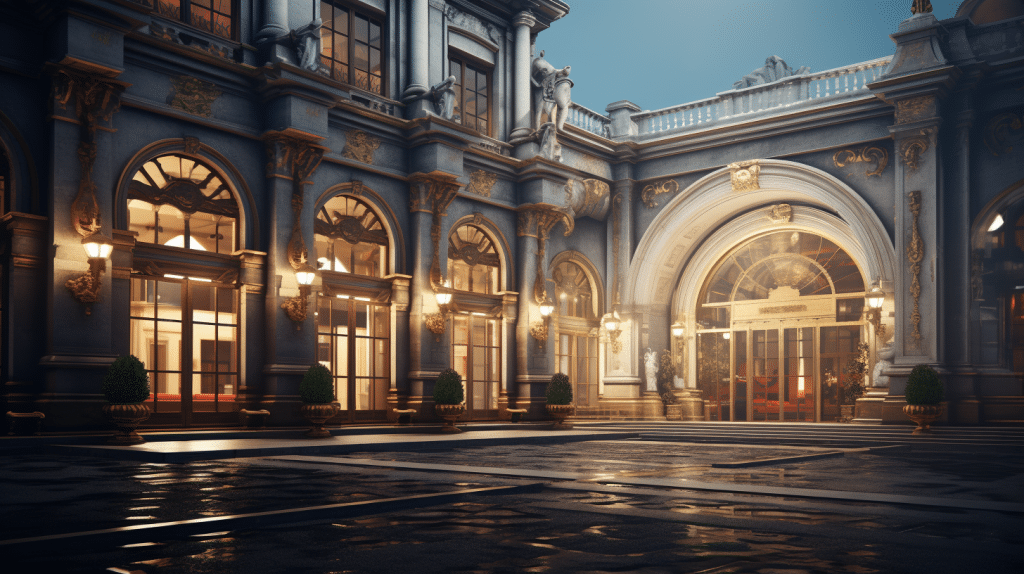
In summary, the integration of VR in architecture and design opens up a world of possibilities. It enables professionals to create more immersive, detailed, and interactive experiences that not only enhance their own design process but also empower clients to actively engage and contribute to the final outcome. VR is transforming the industry, paving the way for innovative and captivating architectural and design solutions.
In conclusion, virtual reality (VR) is revolutionizing the way architects and designers visualize and explore spaces in 3D. By utilizing VR, architects and designers can create immersive experiences that allow them to fully immerse themselves in their designs and interact with them in ways that were previously unimaginable. With VR, architects and designers can walk through their designs, examine every detail, and make informed decisions about the layout, materials, and aesthetics. This level of immersion and interaction not only enhances the design process but also improves collaboration among team members and stakeholders.
Moreover, VR offers a wide range of benefits to architects and designers. One of the key advantages is increased efficiency. With VR, architects can quickly iterate on their designs, making changes in real-time and instantly visualizing the impact. This eliminates the need for time-consuming and costly physical prototypes. Additionally, VR allows designers to easily test different design options, experiment with lighting and materials, and evaluate the spatial experience before construction even begins.
Furthermore, VR provides an unparalleled level of visualization. Architects can create photorealistic renderings of their designs, allowing clients and stakeholders to fully understand and appreciate the vision. VR also enables architects to simulate real-world conditions, such as daylight and acoustics, providing a more accurate representation of the final space.
National Geographic Explore VR – is it Worth Trying?
To fully harness the potential of VR in architecture and design, it is important to have a solid understanding of the technology and the tools available. Architects and designers should invest in high-quality VR equipment and software that can handle complex 3D models and provide a smooth and realistic experience. Additionally, training and education on VR techniques and best practices are crucial for maximizing the benefits of this technology.
In summary, VR is transforming the architecture and design industry by enabling architects and designers to explore, iterate, and present their designs in a more immersive and interactive way. By embracing VR and mastering its capabilities, architects and designers can unlock a new world of possibilities and create truly remarkable designs in 3D.











